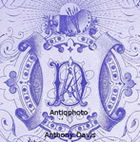Done
Indio, CA, United States
Auction Details
The Grand Tour in the 1880s
The Grand Tour was the principally 17th to 19th-century custom of a traditional trip through Europe, with Italy as a key destination, undertaken by upper-class young European men of sufficient means and rank, typically accompanied by a tutor or family member, when they came of age at 21 years old.
The custom?which flourished from about 1660 until the advent of large-scale rail transport in the 1840s and was associated with a standard itinerary?served as an educational rite of passage. It was primarily associated with the British nobility and wealthy landed gentry.
By the mid-18th century, the Grand Tour had become a regular feature of aristocratic education in Central Europe as well, although it was restricted to the higher nobility.
With the rise of industrialization in the United States in the 19th century, American Gilded Age nouveau riche adopted the Grand Tour for both sexes and among those of more advanced years as a means of gaining both exposure and association with the sophistication of Europe.
The primary value of the Grand Tour lay in its exposure to the cultural legacy of classical antiquity and the Renaissance, and to the aristocratic and fashionably polite society of the European continent. It also provided the only opportunity to view specific works of art, and possibly the only chance to hear certain music.
A Grand Tour could last anywhere from several months to several years. It was commonly undertaken in the company of a knowledgeable guide or tutor.
Our auction this month takes you on a typical Grand Tour; after crossing the English Channel, it passes through Belgium, Holland, Germany, Austria, Italy, and France.
We hope you enjoy our selection of original professional photographs collected on the Grand Tour.
Lot Number: Lowest
24
View:
24
TOP

















































